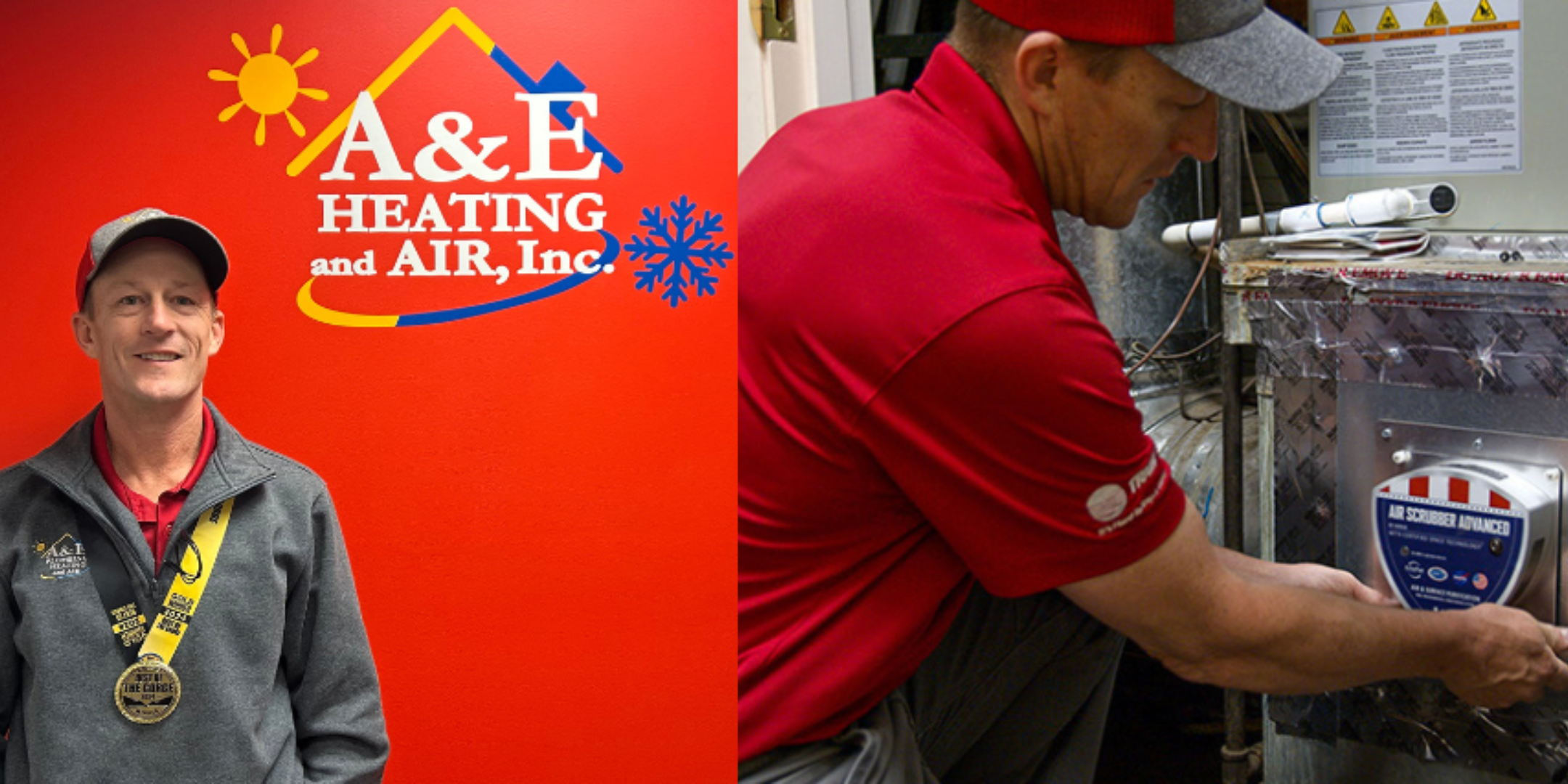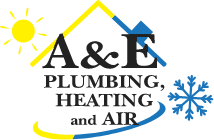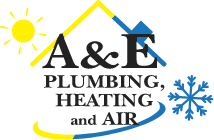Inside the Retrofit: How We Revive Aging HVAC Systems in Gorge-Area Homes
October 10th, 2025
4 min read
By Daphne Hunt

If your HVAC system is starting to show its age — uneven temperatures, higher bills, constant noise —.png?width=415&height=277&name=HUBSPOT%20IMAGE%20FORMAT%20(54).png) you’re not alone. Most homeowners hit that frustrating point where comfort drops, costs rise, and every contractor seems to suggest a full replacement. But what you might not know is that you probably don't need to start from scratch.
you’re not alone. Most homeowners hit that frustrating point where comfort drops, costs rise, and every contractor seems to suggest a full replacement. But what you might not know is that you probably don't need to start from scratch.
At A&E Plumbing, Heating and Air, we’ve spent over 17 years helping homeowners across Oregon and Washington — from cozy Gorge cottages to family homes in the Portland and Gresham Metro — find smarter, more affordable ways to modernize what they already have. We’ve seen how the right retrofit can turn a tired system into a quiet, efficient workhorse again.
By the end of this article, you’ll know exactly what a retrofit is, how it can save you thousands, and how to tell if your home is a good candidate. No jargon, no scare tactics — just clear, practical insight you can actually use to make the right call for your home and your comfort.
You Don’t Always Need a “Brand-New Everything"
Replacing your entire HVAC system can feel like your house handed you a surprise bill just for being an adult. It’s costly, messy, and somehow always happens right after another major expense — like right after you’ve replaced a water heater or paid for new tires.
But not every system needs to be replaced.
In many Oregon and Washington homes — from historic farmhouses in The Dalles to newer builds in Gresham — the bones of your HVAC system are often still solid. The problem is usually one or two aging components that can’t keep up anymore.
That’s where retrofitting comes in. It’s the art of upgrading what’s underperforming while keeping what still works beautifully. At A&E Plumbing, Heating and Air, we’ve been doing this work for over 17 years across the Columbia River Gorge and into the Portland Metro, and we’ve seen the relief homeowners feel when they realize they don’t have to start over.
Retrofitting gives you a way to modernize your home comfort without tearing it apart — and that’s a win for both your budget and your sanity.
What a Retrofit Actually Means (No, It’s Not a Fancy Word for “Patch Job”)
Let’s clear this up right away: retrofitting is not the same as patching.
When we retrofit, we’re upgrading the brains and performance parts of your existing HVAC system — things like blower motors, thermostats, zone controls, or ducting — to help it run cleaner, quieter, and more efficiently.
You’re not settling for a shortcut. You’re choosing precision over panic.
Here’s an easy way to think about it: a retrofit is like updating your smartphone’s operating system instead of buying a new phone. The body is the same, but it suddenly does things faster, smarter, and with way less energy.
Many homeowners worry that a retrofit means a “temporary fix.” It’s not. When done right, a retrofit can add years to your system’s life — sometimes extending its efficiency by a decade or more — without the chaos and cost of a total replacement.
3 Reasons Retrofitting Makes Total Sense
1. You Keep the Good, Lose the Bad
Most HVAC systems don’t fail all at once. Maybe your blower motor’s tired, or your control board is outdated, or your ductwork wasn’t sealed properly in the first place. Why replace everything when 80% of it still works perfectly?
outdated, or your ductwork wasn’t sealed properly in the first place. Why replace everything when 80% of it still works perfectly?
Retrofitting lets you surgically replace the problem areas and preserve what’s already paid for.
You’ll benefit from:
- Lower upfront cost — typically 30–50% less than replacing your entire system.
- Minimal disruption — we’re in and out fast, and there’s no need to demo walls or haul away major equipment.
- Faster comfort — many retrofits are complete within a day, and you’ll feel the improvement right away.
Homeowners often hesitate because they assume “partial fixes” never last. But in reality, a targeted retrofit often delivers stronger results than a rushed full replacement, especially when your system’s structure and duct layout are still in good shape.
2. You Can Tap Into Energy Rebates Without Replacing Everything
Did you know Oregon and Washington utilities often pay homeowners for upgrading parts of their systems — even without installing a whole new one? Retrofitting energy-saving components like variable-speed motors, smart thermostats, or efficient compressors can unlock hundreds in rebates and long-term energy savings.
So instead of spending tens of thousands upfront, you can make smaller, smarter improvements that still qualify for the same incentives.
And because retrofits are less invasive, you don’t need to coordinate multiple contractors, pull major permits, or live without heating or cooling for days. You’ll get measurable efficiency gains, lower monthly bills, and a smaller carbon footprint — all without gutting your system.
It’s the best of both worlds: sustainable upgrades without the sticker shock.
3. It Buys You Time to Plan Your Future System Right
Maybe your furnace works, but your AC is aging. Maybe your ductwork needs help, but your air handler is solid. HVAC systems are complex, and they don’t all age at the same pace.
solid. HVAC systems are complex, and they don’t all age at the same pace.
Retrofitting gives you time and flexibility. Instead of reacting to a breakdown in the middle of a heatwave, you can plan your next upgrade when it makes sense — financially and seasonally.
You also stay in control. Technology changes fast: today’s high-efficiency heat pumps or inverter systems might drop in price or expand rebate programs within a year. A retrofit lets you get more life out of your current system while waiting for the right time to make a bigger investment.
It’s not procrastination. It’s strategy.
The Hidden Bonus: Your Home Stays Happier
Every home has its own personality — and HVAC systems are often custom-fit to that personality. Older homes in places like Hood River or Cascade Locks might have narrow ductwork or limited crawl space access. Newer builds in Gresham or Troutdale may have modern systems that just need fine-tuning to match the family’s comfort patterns.
When you retrofit instead of replace, you preserve what fits your home’s structure and character. You avoid unnecessary construction, keep your existing duct paths intact, and modernize in ways that actually make sense for your house — not just for a catalog photo.
So, Should You Retrofit?
Retrofitting isn’t a one-size-fits-all solution, but it’s often the smartest middle ground. If your system is under 15 years old, mechanically sound, and struggling to keep up with your home’s comfort needs, it’s worth exploring.
A retrofit might be your perfect next step if you’re thinking:
- “I want more comfort, but I can’t justify a full replacement.”
- “My energy bills keep climbing, but everything still runs.”
- “I just want my system to work better without another huge home project.”
At A&E Plumbing, Heating and Air, our technicians start with a detailed assessment — no pressure, no sales pitch. We help you see what’s working, what’s not, and what upgrades will give you the most impact for your investment.
Simplifying the Retrofit Decision for Everyday Homeowners
Retrofitting isn’t a shortcut — it’s a smarter, more flexible way to modernize your HVAC system. It saves money, cuts waste, and keeps your home’s comfort balanced year-round.
money, cuts waste, and keeps your home’s comfort balanced year-round.
But it’s not always the right move for every setup.
If your system’s on its last leg, replacement might be the better call. And if a small part is failing, a simple repair may be all you need.
That’s where our next article comes in: Repair, Replace, or Retrofit — Which One’s Right for You?
Because when it comes to home comfort, the best decision is the one that fits your home, your timeline, and your peace of mind.
Daphne Hunt holds a bachelor's degree in English and Mass Communication and has a lifelong passion for writing. She thrives on using her skills to craft compelling pieces that inform, inspire, and connect with readers.
Topics:



